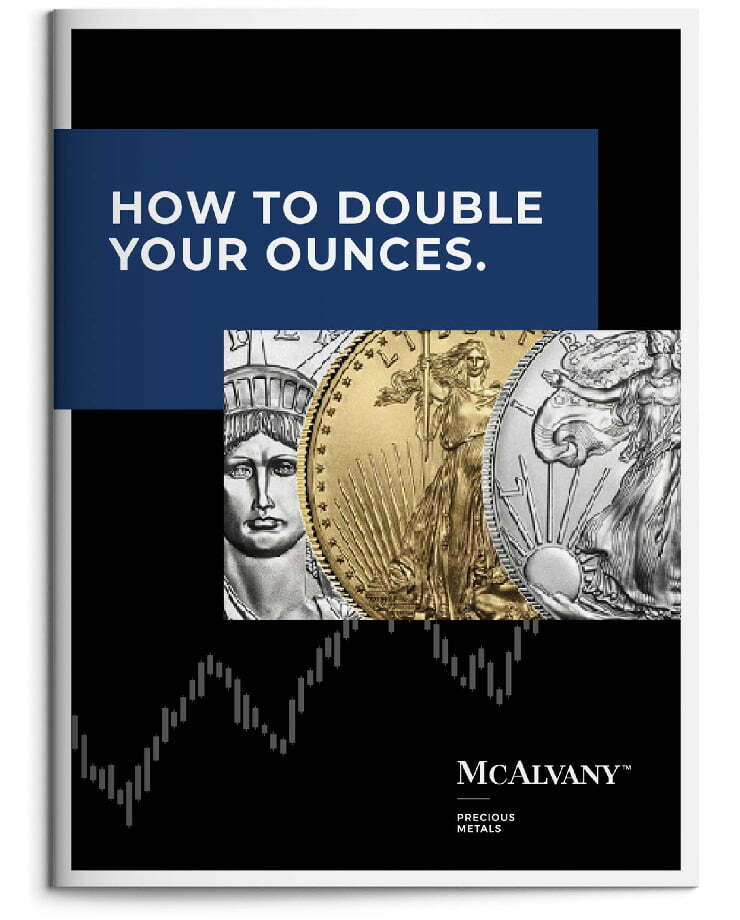Wealth Preservation & Creation
Despite the mid-summer doldrums typical of the season, this was another active week on Wall Street. Major market stock indexes made new record highs despite the very unhealthy fact that the percentage of S&P 500 members making new 52-week lows is breaking out decisively to the upside. Gold and silver gained, precious metals miners surged, energy got smacked, the dollar dropped, and yields popped.
Last week, HAI suggested that the Trump administration, by national security necessity, looks very likely to pursue policy prerogatives that prioritize addressing our most critical, long-ignored national vulnerabilities. Those critical priorities include the revitalization and reshoring of America’s severely atrophied manufacturing base along with a significant reduction in the national debt-to-GDP ratio.
If this administration is successful in accomplishing meaningful progress on both fronts, there are several critical implications for investors. The U.S. dollar is likely to be considerably weakened, the yield curve is likely to be substantially suppressed, and the economy is likely to be run hot. That means some form of yield curve control while running industrial policy that features highly inflationary money printing to re-shore and revitalize our manufacturing base as the official sector buys commodities, properties, companies, and assets deemed critical to national security.
As HAI has stated numerous times previously, the “why” is that, as Secretary of State Marco Rubio said in January, “If we stay on the road we’re on right now, in less than 10 years virtually everything that matters to us in life will depend on whether China allows us to have it or not.” That reality now appears to be, finally, an unacceptable state of affairs for both the Department of Defense (DoD) and the Executive Branch (EB).
In short, if the last two decades were characterized by the unsustainable approach of radical and activist Federal Reserve monetary policy designed to perpetually kick the can down the road to “keep the music playing” at all costs, then we now appear to be entering the era of radical and activist DoD and EB action to address the accrued consequences of past policy malpractice.
Last week, as supporting evidence that the DoD is now pushing a radical agenda, HAI referenced the 2026 National Defense Authorization Act that creates a new Economic Defense Unit providing wide latitude for the Department of Defense to make investments that are deemed important to “reinforce military advantage.” HAI also highlighted the Pentagon’s recent move to become the largest shareholder of rare earth miner MP Materials as early evidence of this new industrial policy in action.
Then late last Friday and again this week, we received more confirmation that we really don’t seem to be in Kansas anymore, and that we certainly do look to be headed toward unprecedented radical and activist action from the executive branch as well.
After last week’s disastrously weak non-farms payrolls report that not only badly missed estimates but also notched record downward trailing two-month jobs report revisions, the Trump administration responded by firing the Bureau of Labor Statistics (BLS) Commissioner for arriving at such disastrous results.
After Trump fired the BLS Commissioner via Truth Social, the White House followed up with the statement: “BLS Has Lengthy History of Inaccuracies, Incompetence” and added that “previously faulty [May and June] jobs reports enabled the Federal Reserve to continue its disastrous policy of keeping interest rates high.”
As a reminder, the post-1971 dollar based global system relies upon global trust in America’s honest and reliable economic data and the fully independent Fed that can adequately respond, in a non-partisan fashion, to the real economic facts on the ground.
Whether Trump is correct about corrupt, politically motivated data out of the BLS or he is in fact the one being political by tossing out statisticians delivering inconvenient truths, this entire episode is decidedly U.S. dollar system negative any way you slice it.
Adding to the third world-like carnival atmosphere, late last Friday, hours after the decision to fire the BLS Commissioner, news broke of the resignation of Federal Reserve Governor Adriana Kugler. Kugler’s resignation created an unexpected open seat on the Federal Reserve board to be filled by Trump.
This week, President Trump announced that his choice to replace Kugler would be none other than his own head of the Council of Economic Advisors, Stephen Miran. As a reminder, Miran is the Trump advisor who penned a report last November, titled: “A User’s Guide to Restructuring the Global Trading System.”
In that report, Miran outlines radical policy prescriptions to use tariffs and even proposals to outright disincentivize the foreign holdings of U.S. Treasuries in an attempt to weaken the dollar—and by extension allow for rebuilding and revitalizing the atrophied U.S. manufacturing base by making it more competitive.
Specifically, in “A User’s Guide,” Miran wrote that, “If the root cause of dollar overvaluation is demand for reserve assets, Treasury can make reserve accumulation less attractive. One way of doing this is to impose a user fee on foreign official holders of Treasury securities, for instance, withholding a portion of interest payments on those holdings.”
In HAI’s view, with his radical weak dollar views and administration insider status, the nomination of Miran to the Fed is another very strong indication that we’re right on the brink of an era of radical and activist Executive Branch intervention deep into previously independent—by design—government segments. That’s also decidedly U.S. dollar system negative any way you slice it.
Now, in HAI‘s view, this radical Department of Defense and Executive Branch activist intervention is certainly a very dangerous chapter for modern American government. That said, practically speaking, we may have already reached the point where such dangerous endeavors might be necessary.
Perhaps the analogy most apt for America today is that of a sick patient needing risky surgery to survive an otherwise terminal prognosis. The surgery will certainly be painful and it absolutely could end badly, but given the current condition, the surgery, if successful, offers the only known medical path back to health.
Now, in HAI‘s view, that American “surgery” represents an environment in which gold and hard assets flourish. After all, Stephen Miran himself agrees. As Miran wrote in “A User’s Guide” in November, “these policies may supercharge efforts of those looking to minimize exposure to the United States. Efforts to find alternatives to the dollar and dollar assets will intensify… Alternative reserve assets like gold…will likely benefit.”
HAI understands the dire condition America finds itself in and the risk faced from the surgery that awaits. Even if the surgery goes well, the purchasing power of the dollar is extremely likely to be massively debased, and the net present value of debt obligations is extremely likely to be dramatically reduced. In this coming period, investors must play a dedicated game of defense against the risk of major dollar devaluation. Gold is history’s undisputed proven store of value. HAI strongly suggests that in the unfolding environment, investors utilize gold and gold-related equities as history’s proven wealth preservation and wealth creation offense.
Weekly performance: The S&P 500 was up 2.43%. Gold was up 0.94%, silver was up 3.65%, platinum gained 0.69%, and palladium was off 7.38%. The HUI gold miners index surged 10.15%. The IFRA iShares US Infrastructure ETF was up 1.64%. Energy commodities were volatile and lower on the week. WTI crude oil was off 5.78%, while natural gas was lower by 2.81%. The CRB Commodity Index was down 0.48%. Copper gained 0.95%. The Dow Jones US Specialty Real Estate Investment Trust Index was down 0.68%. The Vanguard Utilities ETF was up 0.53%. The dollar index was down 0.87% to close the week at 98.28. The yield on the 10-yr U.S. Treasury was up 6 bps to close the week at 4.29%.
Have a wonderful weekend!
Best Regards,
Morgan Lewis
Investment Strategist & Co-Portfolio Manager
MWM LLC















